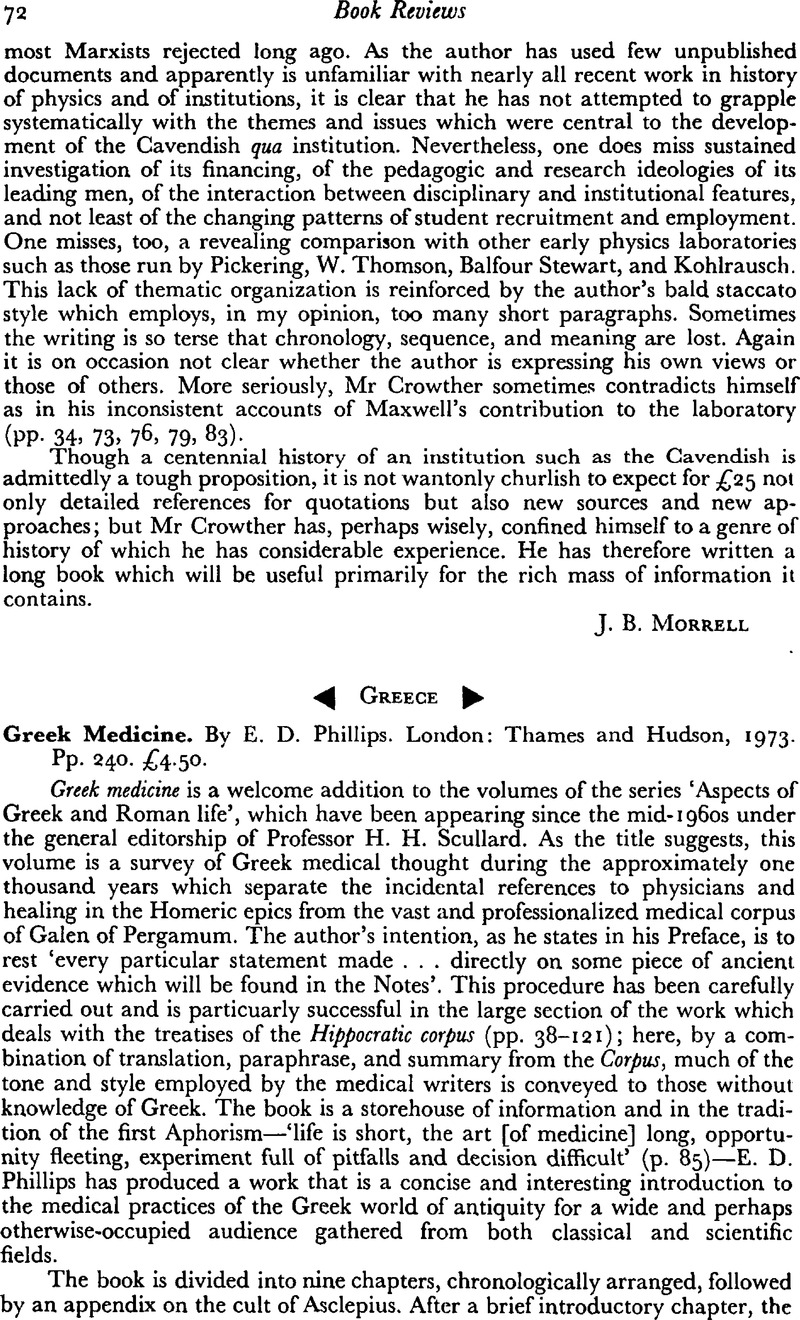Article contents
Greece - Greek Medicine. By E. D. Phillips. London: Thames and Hudson, 1973. Pp. 240. £4.50.
Published online by Cambridge University Press: 05 January 2009
Abstract

- Type
- Book Reviews
- Information
- Copyright
- Copyright © British Society for the History of Science 1976
References
1 Sigerist, H. E., A history of medicine. Volume II. Early Greek, Hindu, and Persian medicine (New York: Oxford University Press, 1961)Google Scholar, was probably wise to omit the tragedians from his general survey of Greek medicine.
2 But now see the important article by Smith, W. D., ‘Galen on Coans versus Cnidians’, Bulletin of the history of medicine, xlvii (1973), 569–85Google Scholar, which casts serious doubt on whether or not Galen's evidence substantiates the existence of rival schools on Cos and Cnidus in the 6th/5th centuries b.c.
3 Trapp, Heiga, ‘Die hippokratische Schrift DE NATURA MULIEBRI. Ausgabe und textkritischer Kommentar’ (University of Hamburg Ph.D. dissertation, 1967), pp. 28–56Google Scholar, convincingly argues that the treatise Nature of women is largely a rewriting of material from Diseases of women and Sterile women, with a concentration on therapeutic techniques. Much of the material cited as coming from Nature of women is found in Diseases of women. For example, in footnote 314, Nature of women, c. 98 was taken from Diseases of women I, c. 76.
4 For Soranus one should consult Ilberg, Joannes's edition, Gynaecia. Libri IV. Corpus Medicorum Graecorum (=CMG) IV (Berlin, 1927)Google Scholar. English readers would also enjoy Owsei Temkin, 's translation, Soranus’ gynecology (Baltimore: The Johns Hopkins Press, 1956).Google Scholar
5 For Rufus of Ephesus, see Gärtner, H.'s edition, Rufus von Ephesos. Die Fragen des Arztes an den Kranken. CMG Supplementum IV (Berlin, 1962).Google Scholar
- 1
- Cited by


